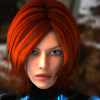Blending of colour and image in materials
 avmorgan
Posts: 218
avmorgan
Posts: 218
This discussion was created from comments split from: RRRR TTD Voting thread.
You currently have no notifications.
 avmorgan
Posts: 218
avmorgan
Posts: 218

Licensing Agreement | Terms of Service | Privacy Policy | EULA
© 2025 Daz Productions Inc. All Rights Reserved.
Comments
I've been searching for information concerning the "alpha blend mode" in the layered image editor, hoping it will clue me in on the default blending mode for colors added to a texture in the materials properties, and this is the best hint I've come across. It suggests that the default blend mode, if you leave it set on alpha blend mode for a layer colored using the color picker in L.I.E., the color is effectively multiplied, and I presume that would make multiplication the default blend mode in the properties the same.
Is this a correct assumption?
Yes, in general colours and maps are multiplied when both can be set for a property.
Thanks, Richard! I was a bit unsure after trying to use an image map in Translucency which was originally a face SSS map modified in Photoshop with the eyebrows colored to match my hair Translucency, and the skin areas colored (multiplied) using the color originally in the color picker). The face ended up too dark and too red compared to the original SSS map with the color added. I revised my map several times getting it to look right in the render, and my "redhead" eyebrows are no longer coming out so dark.